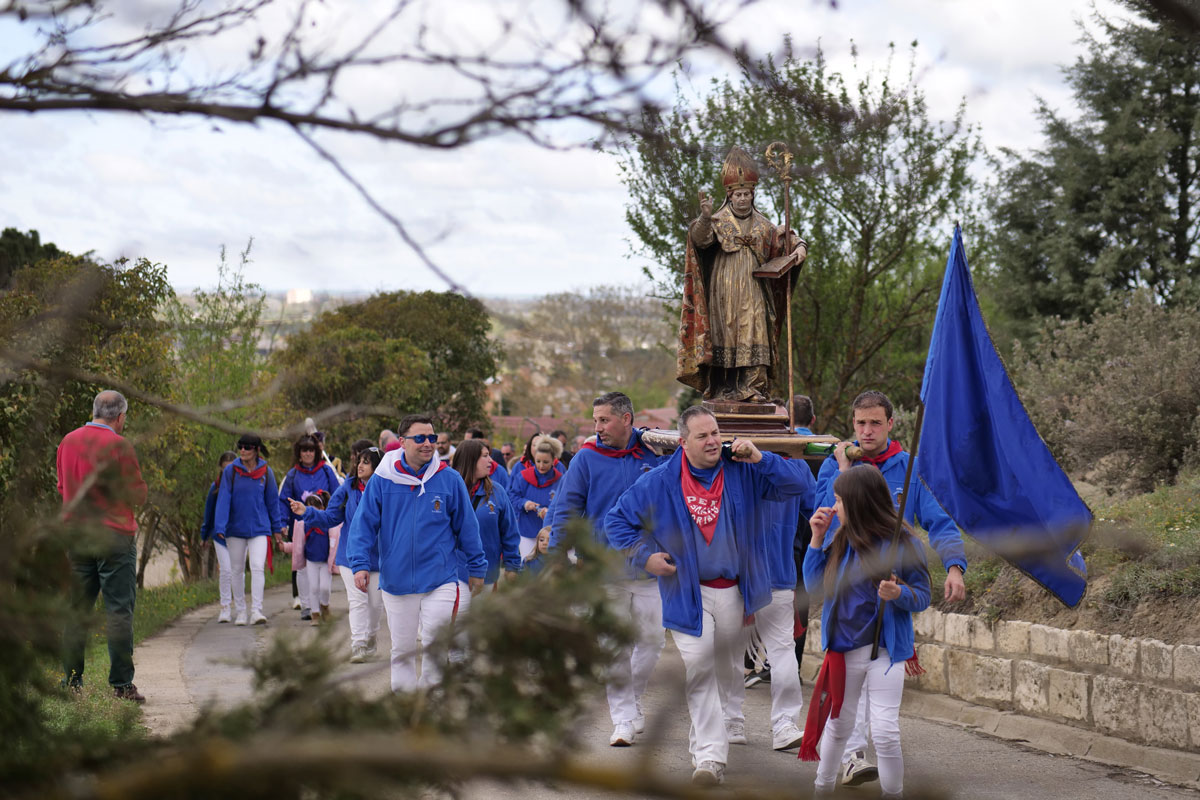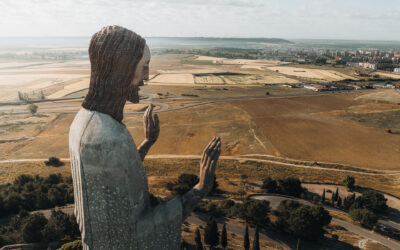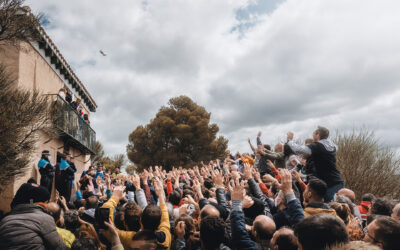Last February, the Department of Culture, Tourism and Festivities of the City Council of Palencia announced a further step in its efforts to obtain the declaration of the pilgrimage as a Festival of National Tourist Interest. This event has been held in the city of Palencia since 1931, on the Sunday closest to the 16th April.
In order to obtain this declaration in Spain, it is necessary to have antiquity, roots and cultural relevance, as well as to present a complete and well-documented application to the Secretary of State for Tourism.
Among the requirements demanded by the Ministry for the awarding of this distinction are aspects such as its antiquity and continuity over time, popular roots or citizen participation, especially valuing the existence of associations that support it. In this case, Palencia is fortunate to have both the Neighbourhood Association of the Barrio del Cristo and the Peña Santo Toribio whose collaboration gives a boost to the celebration of the festival.
The Secretary of State takes into account the originality of the event and its repercussion, which is why promotion in the media and the existence of tourist infrastructures in the municipality are also fundamental.
The festival
The celebration of the Pedrea del Pan y el Quesillo is a centuries-old tradition that dates back to medieval times. Its origin lies in the legend of Santo Toribio, a saint who came to Palencia to preach against the Priscillian heresy. According to legend, Santo Toribio took refuge in a cave on the slopes of the Otero hill and, thanks to his prayers, he managed to lower the flow of the river Carrión, which had flooded the city as a divine punishment.
A popular festival that has lasted until the present day and attracts thousands of visitors every year.
This legend was transformed into a rogativa and later into a popular festival that has lasted until the present day and attracts thousands of visitors every year.
The pilgrimage begins with a procession from the Church of San Ignacio and Santa Inés to the hermitage of Santo Toribio, where a mass is celebrated. After the religious ceremony, those present eagerly await the moment of the “Pedrea del Pan y el Quesillo”, when thousands of bags of bread and cheese are thrown from the balcony of the hermitage. It is an impressive spectacle that symbolises divine forgiveness and reconciliation between the inhabitants of Palencia and Santo Toribio.
It should be remembered that since 2005, the Romería de Santo Toribio has been awarded the seal of Fiesta of Regional Tourist Interest by the Junta de Castilla y León to the most deeply-rooted, unique and colourful celebrations and events in our community.
See Palencia from the eyes
The Victorio Macho interpretation centre is a cultural space located at the foot of the Cristo del Otero in the capital of Palencia. A place that has been transformed to house and commemorate the work of the sculptor Victorio Macho, through a large collection of his sculptures and drawings.
Its attractions also include a virtual reality experience that allows visitors to enjoy 3D views from the 21-metre high Cristo del Otero. This initiative, launched by the Department of Tourism of Palencia City Council, has been designed and programmed with an application that combines 3D scenarios with aerial filming.
The experience offers a journey through the interior of the sculpture that allows you to enjoy spectacular views of the city, the Cathedral, the historic centre and the Canal de Castilla.
Visitors can also enjoy the permanent exhibition of the artist Victorio Macho. It shows plans, explanatory panels, photographs, sketches, busts and moulds of sculptures that the author created throughout his career. Visitors can also find anecdotes and curiosities about the construction of the famous Cristo del Otero.
In June 2021, as part of the celebrations for the 90th anniversary of the Cristo del Otero, the permanent exhibition of the artist was expanded to include the display of 24 unpublished drawings by the author, painted in pencil and ink. The documentary “Victorio Macho. Universal Palencia-born sculptor” was shown in the museum’s audiovisual room. This documentary tells the story of the artist’s life and work, which makes the experience at the interpretation centre even more interesting.
For the centre’s updated timetable, please click on this link.
You can also take a virtual tour here.



0 Comments